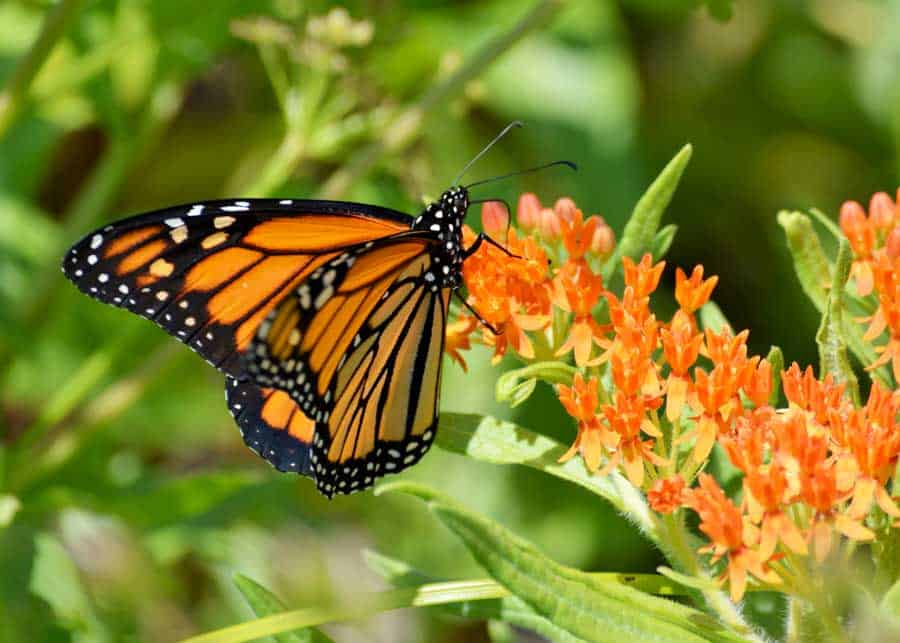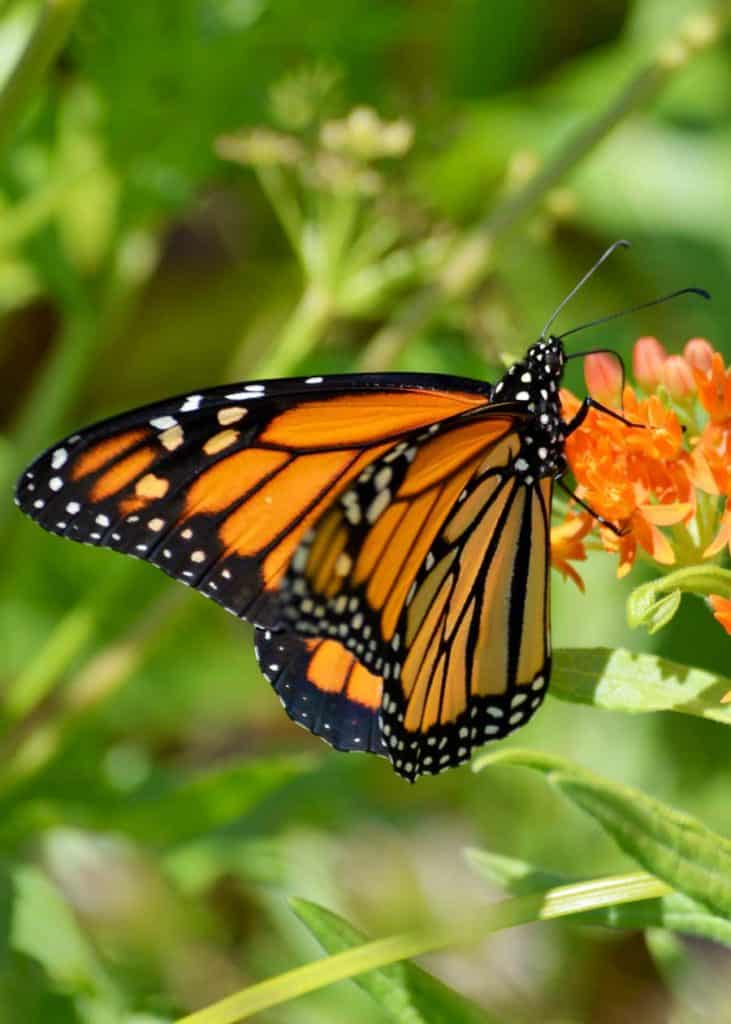If you’ve been learning about raising monarchs, you’ve probably heard of the monarch parasite: OE spores. In this article, you’ll learn what OE parasites are, how they affect monarchs, and how they are transmitted.

Table of Contents
What Are OE Parasites?
Ophryocystis elektroscirrha (OE) is a protozoan parasite that affects monarch and queen butterflies.
OE protozoan is a single-celled animal that can wreak havoc on butterfly populations.
OE Spores
OE survives as spores when outside of the host.
OE spores are dormant protoza. They are carried in the cuticles between the tiny scales on the butterfly’s wings. And for scale, OE spores are 1/100th the size of a monarch scale.
This article is part of our larger Monarch Guide.
OE Spore Life Cycle and Transmission
OE spores infect the monarch caterpillar when it first hatches from its egg. The spores that exist on the egg are consumed by the young caterpillar when it eats the eggshell.
Because of the connection between laying eggs and the young monarch eating the spores at hatching, the life cycle of the OE parasite is directly connected to the monarch’s lifecycle.
The OE parasite is transmitted from the female monarch to her offspring.
While the female is fluttering about ovipositing (laying eggs) on the milkweed, she is also spreading the OE spores onto the leaves of the plant.
After hatching other monarch larvae (caterpillars) eat the leaves that have been ‘dusted’ with the spores.
The spores then germinate within the caterpillar’s gut, and the spores can sometimes actually be seen forming! Infected adults eclose covered with the OE spores and the damage has been completed as once a butterfly has been infected, sadly, there is nothing that can be done.

Can you tell if a monarch has been parasitized?
- During the larval stage, it’s been noted that if a caterpillar has an appearance of being ‘dirty,’ then more than likely, it may have been parasitized with OE.
- During the pupal stage, there may be some signs as well. Watch for odd-looking discolorations during metamorphosis. Look at the areas that are marked by the white arrows. They can appear to be somewhat dirty or splotchy.
Signes of OE Infection in Monarchs
Sometimes an infected monarch may look normal. It may even eclose normally.
- Generally, these butterflies have shorter life spans and have difficulty flying. Both males and females are affected but it is the female that will transfer the spores to her offspring directly.
- Some infected monarchs do not eclose from the chrysalis easily and you will find them struggling to get out of the chrysalis. It’s best not to help the butterfly as this difficulty alone will probably be the indicator that the butterfly has been infected with OE.
- Some butterflies that eclose are unable to fully expand their wings and will fall to the ground or, have deformed wings. Others may even be smaller in size than healthy monarchs.
This parasite can cause a wide range of problems.
How to Tell if a Monarch is Infected with OE Spore
Positive identification of the OE parasite is accomplished with a microscope. If you do not have access to these items, yet are raising a lot of them, you may want to think about investing in these items.
One visual way to check for OE is (not always scientifically accurate) to check the butterfly’s abdomen. If the markings on the abdomen are clear and distinct, there is a fairly good chance the butterfly has not been infected.
How to Handle an OE Infected Monarch
If you determine that a monarch has the OE parasite, you should euthanize it.
Is this really necessary? Let’s think this through. What would happen if an infected butterfly was permitted to flutter about your garden? If it is a female, she can mate and starts ovipositing several hundred eggs onto your plants.
Two problems occur.
- First, she will transfer the spores to your plants each time she stops to nectar and/or oviposit.
- Second, she will transfer the spores to her offspring.
When you do the math, you’ll see that it’s best to end that chain sooner than later.

Your Turn
Have you had OE spores affect your monarchs or queens? How did you handle that situation?
- About the Author
- Latest Posts
Dena Haines is a founder and writer at My Monarch Guide. And is working to make it the best resource for raising and enjoying monarch butterflies.
She also blogs about travel at Storyteller.Travel and photography at Storyteller Tech. Dena is a partner at Storyteller Media, a publishing company she runs with her husband, Bryan.
